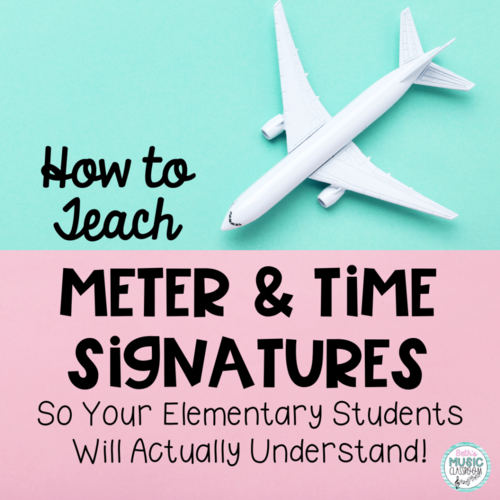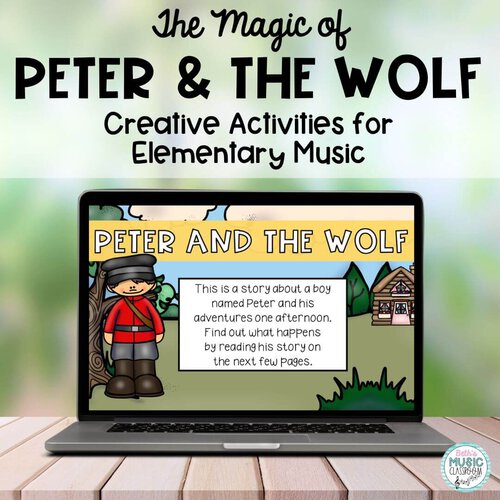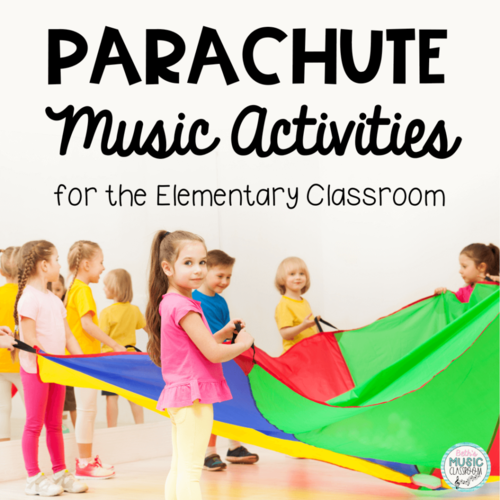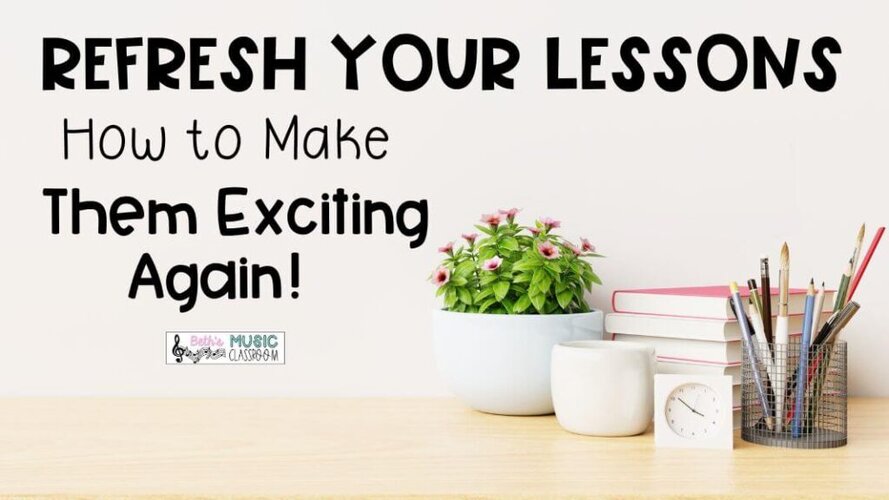
Have you ever hit that point where your music lessons start to feel repetitive? It happens to all of us. When you’re teaching the same concepts year after year (or even class after class), it’s easy to feel like you’re stuck in a rut. The good news? Small changes can make a big difference. Today, I’m sharing six simple ways to refresh your music lessons and bring new energy into your classroom.
1. Try a New Teaching Approach in Your Music Lessons
If you’re getting bored teaching the same way, it might be time to mix up your teaching style. Instead of whole-group instruction, try using centers or stations where students rotate through different activities. In a music lesson, let students take the lead by creating their own movement routines, rhythms, or compositions.
Also, centers are a great way to review rhythmic/melodic elements and music theory elements—like meter, tempo, and dynamics. Each year, I add in a day of centers with 6-8 activities spread out around the room. My students love it, and I enjoy the break from our regular music lesson activities. Click here to find some exciting music theory games on my TpT shop.
Another idea to refresh your music lesson plans is to add storytelling into your lessons. You can do this two different ways. First, make your entire K-2nd grade lesson center around a story, with each song or activity centered around the story’s theme. Secondly, you could use a children’s book to guide the lesson. You could also decide to let students create different activities and sound stories for each page or place in the book. This works much better with 2nd-4th grade students.
Changing your approach can engage students in new ways and help you see your music lessons from a fresh perspective. You can find my favorite children’s literature lessons here.
–
2. Introduce a New Resource or Manipulative
Adding a new tool (or one they haven’t seen in awhile) to your music lessons can definitely refresh any music activity. Try adding scarves, bean bags, or parachute activities or pull out your boomwhackers if you haven’t used them in awhile. Try out some new digital interactive games or music virtual field trips.
Sometimes, even just how you introduce a new game could make the biggest difference in the students’ excitement level. When you’re trying something new, make it a big deal and call it something amazing—that will make such a difference in student engagement.
3. Involve Technology
If you’re not already using technology in your music lessons, now might be a great time to start. Try incorporating digital composition tools, interactive games, virtual field trips. Depending on the grade level, you can use recording apps to let students hear their own performances and reflect on their progress.
If you already use technology in every lesson, maybe change it up by having a “no tech day.” Include physical activities and games—like folk dancing, singing games, 4 corners, etc.
4. Swap Music Lessons with a Colleague
Here’s another tip to shake things up: observe another teacher’s approach. If you work with another music teacher, try swapping music lesson plans for a day. If you don’t have a music team at your school, connect with other teachers online and trade ideas. Another option is to observe a colleague’s class or invite them to watch yours. Seeing a fresh perspective might give you new ideas to bring back to your own classroom.
One year on April Fools’ Day, my school let teachers and staff switch jobs for the day (only if they wanted to). I ended up teaching 3rd grade science and social studies, and it gave me a whole new appreciation for what others do. It was eye-opening—but I was definitely glad to return to the music room the next day!
5. Incorporate More Student Choice
The next way you could mix up your music lessons is to allow students a chance to choose activities. When students have a say in their learning, they’re more engaged—and you might find it more fun, too! Try letting students choose the warm-up song or vote on which game to play. If you’re working on an activity with instruments or movement, give them choices about how to participate.
When creating a soundscape to a book or poem, I let each small group of students decide what instrument, sound effect, or movement they’d like to add. Not every group will choose the same thing, and that’s okay. Use a short poem or song as the A section, and then perform a rondo with each student group performing their soundscape as the new section.
Another fun option is using a bracket of different songs. This is great for March Madness. You decide on the theme or genre, and then compile a list of songs. Play two songs, and students can decide which one will advance to the next round. If you want to try it out, you can visit this blog post for tips.
6. Change Up Your Classroom Setup
Finally, sometimes, a physical change in your space can make a lesson feel brand new. Rearranging your classroom, even temporarily, can encourage different kinds of movement and interaction. You may change your regular seating arrangement for setting up stations, creating a circle for group activities, or designating a special performance area.
Right before summer break, I use a camping themed music lesson for my Kindergarten and 1st grade classes. I shut off the lights and have a YouTube video for the light and sound of a campfire. They really seem to enjoy it, especially since it’s not the norm.
Even small changes—like adding visuals, decorations, or lighting effects—can help set a different mood and refresh the learning environment.
Feeling stuck is normal for every teacher at some point, but you don’t have to stay there. You just need a new perspective and a refreshed look. Pick one strategy to try this week in your music lessons and see how it goes! Also, check out the rest of my website for helpful music teaching tips!
Have a favorite way to refresh your teaching? Let me know in the comments!

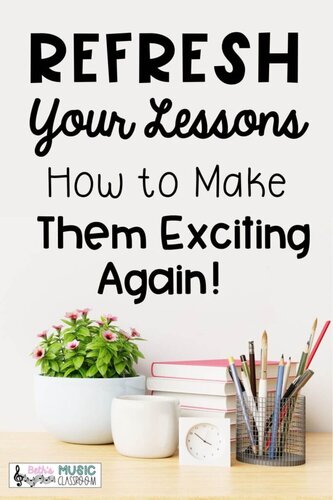
Here’s some other posts you may like.
